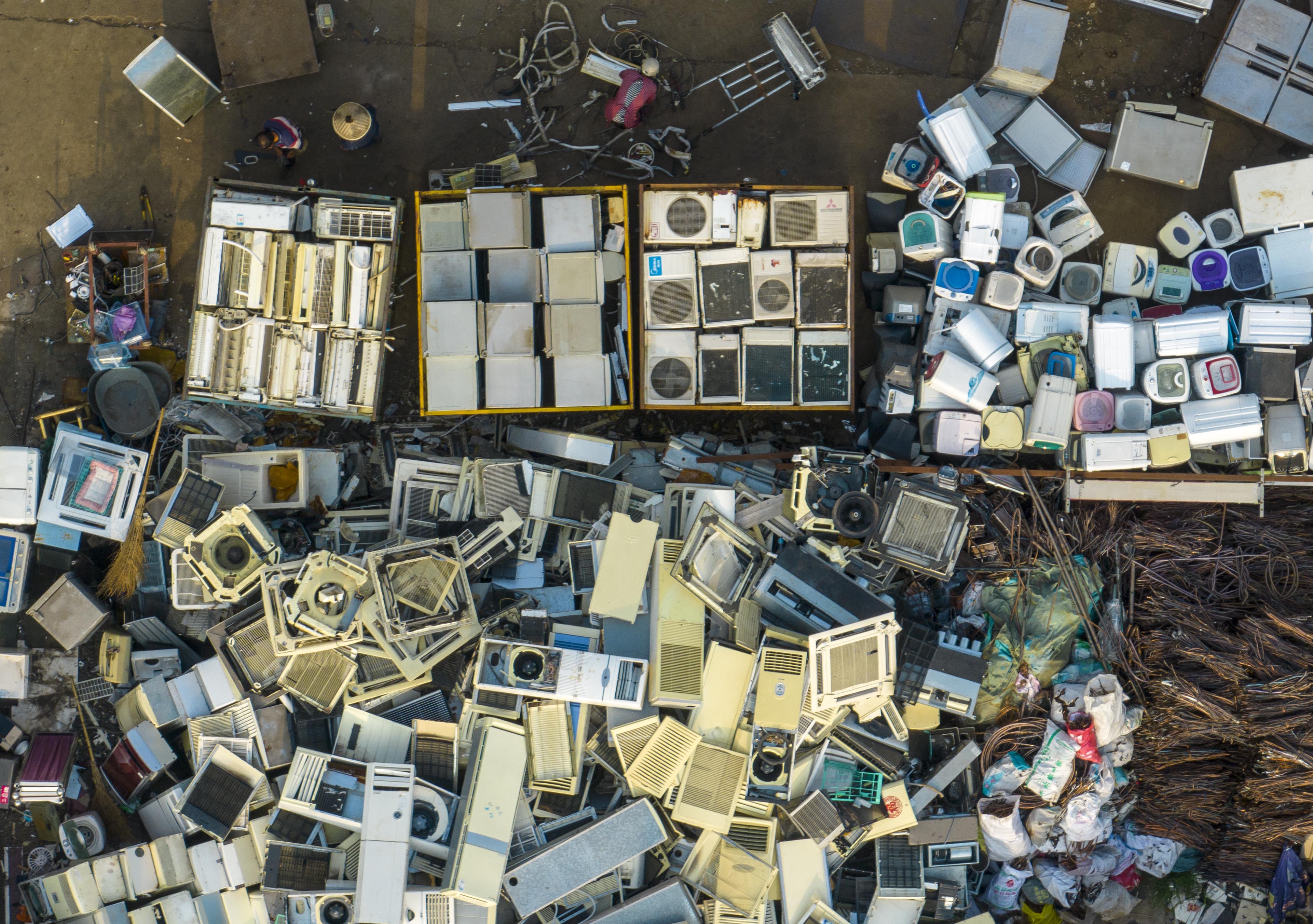Enlarge / The circuitry that’s increasingly inside every modern appliance adds another layer of complexity to fixing the things you own.
Getty Images
The Federal Trade Commission is considering new rules that would require any appliances touting a familiar yellow EnergyGuide label to also include “information on how consumers can repair their products.”
Citing its own “Nixing the Fix Report,” the FTC states that repair information will “strengthen consumers’ right to repair damaged products, without the need to go back to the manufacturer.” That could save customers money, allow non-licensed dealers and repair techs to better compete, and protect the environment, the FTC claims.
Right-to-repair advocates are energized by the proposed rulemaking, the publication of which was unanimously approved. “This is a big deal,” Kyle Wiens, CEO of repair advocate and store iFixit, wrote Monday. “It’s hard to think of a more impactful, consumer-facing and repair policy move from the FTC, or a more surefire way to get repair instructions into the hands of more consumers who need them.” Wiens noted that appliance manuals, whether provided by the company or written by iFixit members on the company’s wiki-style site, are harder to come by than for small electronics. Most people don’t want to take apart devices that weigh hundreds of pounds and draw heavy power or flammable gas to learn more about them.
Nathan Proctor, Right to Repair lead for the US Public Interest Research Group, said in a press release that “including repair requirements as part of the Energy Guide program is the right thing for the planet and important for consumers.”
Advertisement
What will be crucial to any proposed requirement for repair information is access to appliance firmware and software: diagnostics, resetting warnings, and enabling repair beyond the basics. If a consumer repair manual instructs you to use a software tool to finish installing a new belt or filter, but that software program is not available or costs hundreds of dollars, an FTC-mandated manual isn’t strengthening anyone’s right to repair.

Appliances are being replaced at a faster rate. Repair viability is no small part of that.
Getty Images
$900 to see that a $20 fuse needs replacing
GE Appliances, a division of appliance giant Haier, provides licensed technicians with a SmartHQ Service. SmartHQ allows repair workers to “communicate directly with appliances for real-time diagnostics.” The service also provides service manuals for devices. Signing up for the service gives you a mobile app, how-to videos, tech support, and a handheld Bluetooth module that connects to appliances. Signing up without GE Appliances Authorized Servicer status costs $919, if you pay ahead for a full year. $720 of that fee is access to the mobile and web versions of SmartHQ.
Almost every major appliance brand has a similar “authorized” or licensed repair program. They vary in range and scope from a “nice to have” diagnostic tool, to necessary devices that unlock and re-enable devices that have experienced a malfunction. Appliance makers are not likely to easily provide the same service to customers as they sell to repair businesses for hundreds of dollars per year.
Parts availability is another potential downfall—or loophole—to a repair manual requirement. If a manufacturer doesn’t provide the parts necessary for common fixes or requires software to authorize and pair those parts to the device, a repair manual is more dream journal than learning tool.
Advertisement
It’s not impossible for a company to open up part of its licensed repair network—paired parts and exclusive software and all—under repair pressure. Apple, long resistant to any self-guided consumer repair, launched a self-service repair program in April. Customers can buy parts, rent specialty tools, and use detailed manuals to repair their phones, then authorize the parts to their devices through a web service. The process involves providing Apple with all relevant serial numbers; most people, though, would be a bit less wary of LG knowing that they’ve got a new belt in their dryer.
I’ve had the experience of trying to fix my mother’s stove, which worked fine until one day it didn’t. A circuit board inside the console had a visibly damaged capacitor, so the stove was unreliably resetting itself during operation. The actual heating/circulating aspects of the oven worked fine, but they could not be controlled. I spent days looking for a replacement circuit board on high-markup parts sites, eBay, and through authorized dealers, but eventually had to help my mother buy a new model. The appliance store carted off the old oven, and I doubt it was fixed up for a new home.
Right-to-repair legislation stalled
These kinds of repair pitfalls spur right-to-repair legislation, with bills active in more than half of US states and at the federal level. New York’s legislature passed the first such bill in June, which would require electronics manufacturers to provide the same diagnostic and repair tools and parts to individuals as it provides to its own repair technicians. New York Governor Kathy Hochul has yet to sign the bill into law.
The FTC’s proposed rulemaking, the publication of which was approved unanimously, also wants to potentially change and expand labeling for a number or products, including air purifiers, humidifiers, and cooktops, and make EnergyGuide labels more accessible to people buying appliances online.
Disclosure: The author has previously worked for iFixit. He holds no financial stake in the company.
